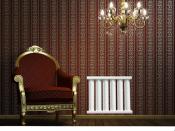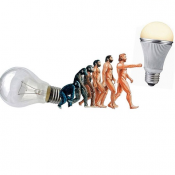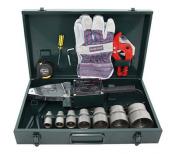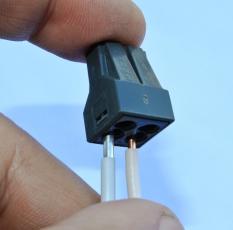Search
Login
Recommended
Ways to connect aluminum and copper wires, how to connect wires correctly, expert advice
When installing wiring, quite often there is a need to connect different current conductors, namely, aluminum and copper wires. From the point of view of electrical and fire safety, this type of connection is more risky and must be performed with strict observance of a number of rules.
What is the essence of the problem of connecting aluminum and copper wires, and what are the options for solving it? Let's try to figure it out.
Content
- The difficulty of connecting aluminum and copper wires
- The main methods of connecting different current conductors
- Alternative methods for connecting aluminum and copper wires
- Features of connecting wires indoors and outdoors
- Expert advice: how to connect aluminum and copper wires video
The difficulty of connecting aluminum and copper wires
Over the past decades, there has been a rapid increase in energy consumption by the population. This led to an increase in the load on electrical networks and, accordingly, on the connection of wires in the wiring.

Therefore, today serious requirements are placed on the installation of electrical wiring, aimed at increasing electrical and fire safety.
Reliable wire connections:
- Density of contractible contact.
- Electrochemical compatibility of contact wires.
The first requirement for high-quality wiring is quite simple to fulfill. In practice, the second requirement is often ignored and incompatible current conductors are connected in a direct manner (by twisting). Due to the electrochemical incompatibility of metals, difficulties arise when connecting copper and aluminum wires.
Aluminum metal with a high degree of oxidation. The oxide film formed on the surface of an aluminum wire in contact with moisture has a high resistance. This negatively affects the conductivity of the compounds.
Copper is a fairly inert metal and the oxide film on copper wires has less resistance.
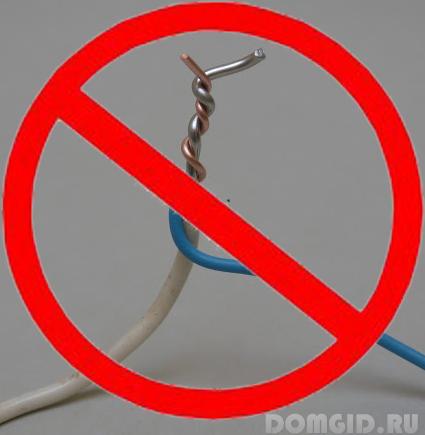
In pairs, copper and aluminum form a short-circuited galvanic connection when moisture enters the contact, the aluminum wire begins to oxidize actively. A thin film with high resistance is formed between the current conductors, as a result, the conductivity is hindered, the electrolysis process takes place, shells are formed at the contact point, heating, sparking of the contacts. This situation may cause a fire.
The electrochemical potential between copper and aluminum is 0.65 mV, while the allowable value of this indicator is 0.60 mV
The solution to this problem is to eliminate direct contact between aluminum and copper wires. There are several options for connecting different conductors to ensure the reliability and safety of electrical wiring.
The main methods of connecting different current conductors
application of terminal blocks
The most common way to connect wires through terminal blocks.

In fact, the terminal block is an insulating plate with contacts. There are two types of wires in the terminal block:
- screw tightening (there is a risk of damage to the wire by the screw itself);
- pressing by plates (more reliable mounting option).
The advantages of the terminal method of connecting wires include:
- ease of connection;
- the connection does not need to be further insulated;
- affordable cost adapters.
The sequence of connection of copper electrical wires with aluminum:
- Strip the ends of the wires from insulation (about 5 mm).
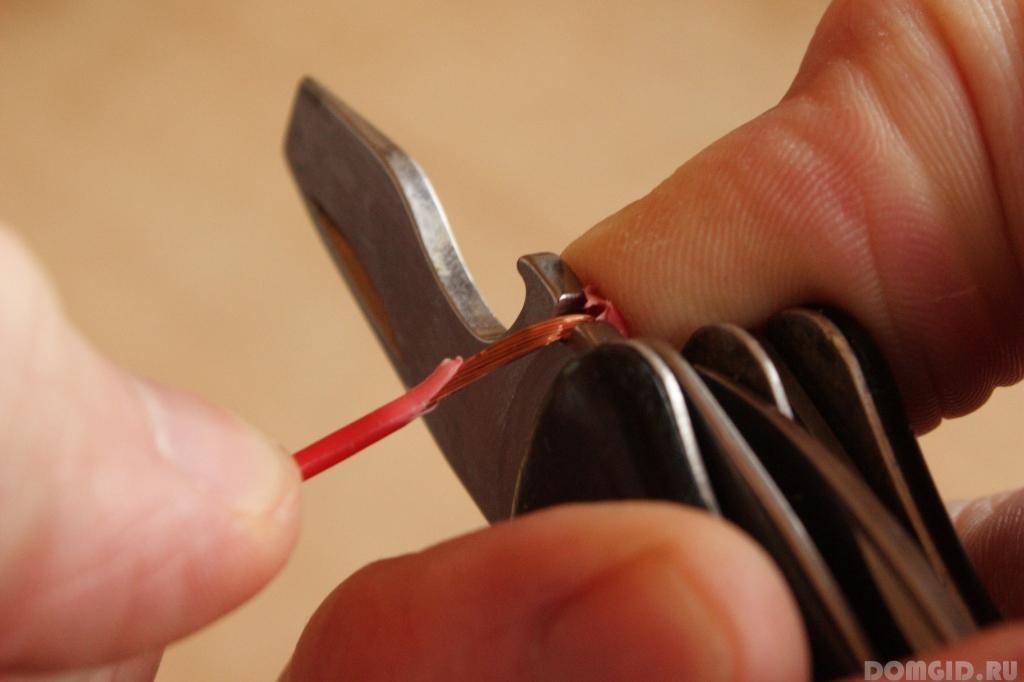
- Insert the wire into the hole.
- Tighten the screw with considerable force.
It is convenient to use the terminal block when connecting the chandelier when the length of the conductor is too short, or for connecting broken and broken copper and aluminum wires in the wall.
Before hiding under the trim, the terminal block must be placed in the junction box
spring terminals for wire connection
One of the varieties of terminal blocks are Wago spring clamp blocks.

Spring terminal blocks are the most efficient and fastest way to connect wires. The main difference from conventional terminal blocks is the method of fixing the wire using a spring clip. It is enough to remove the insulating layer from the conductor and insert the wire into the terminal strip.
In order to connect the copper and aluminum wires, it is better to use special Wago terminal blocks. The contacts in such a terminal block are made of a bimetallic plate and coated with a special paste that prevents oxidation of the wires.
Spring terminal blocks come in two types:
- Disposable Terminal Blocks. Designed for connecting single-core wires with a cross section of 1.5-2.5 mm, the permissible current strength in the junction box is 24A. If the wires are removed from the terminal strip, the spring clip may deform and the contacts cannot be reconnected.
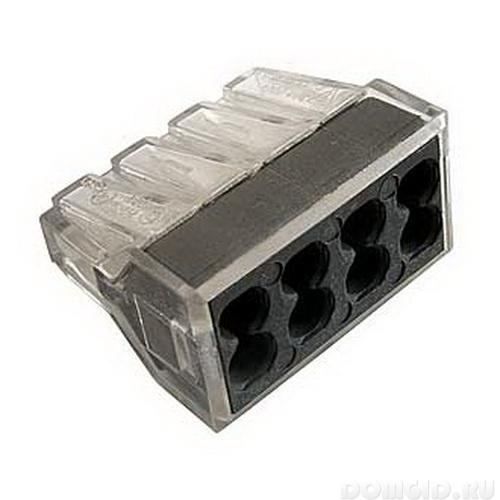
- Reusable terminal blocks. The design provides levers with which you can disconnect / connect the wires. Such adapters are suitable for single-core and multi-core aluminum and copper electric wires, cross-section up to 4.0 mm, permissible current strength 34A.
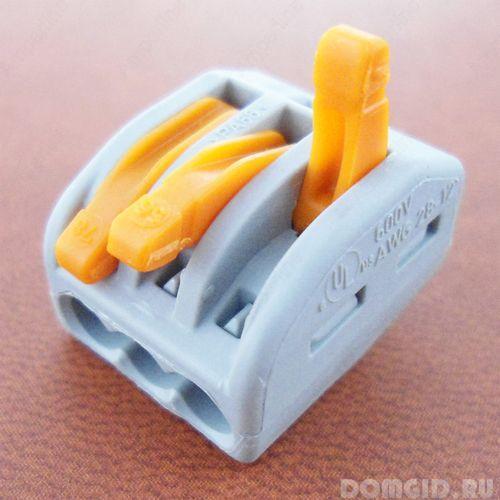
The disadvantage of terminal blocks with a spring mechanism is their cost, they cost an order of magnitude more expensive than conventional adapters.
connection through a nut
To connect wires with a large cross section (4 mm or more), you can use branch compression, known in everyday life as a nut. It is an oval-shaped plastic case, inside of which there is a block of metal plates. Aluminum and copper wires are clamped between the plates with screws.
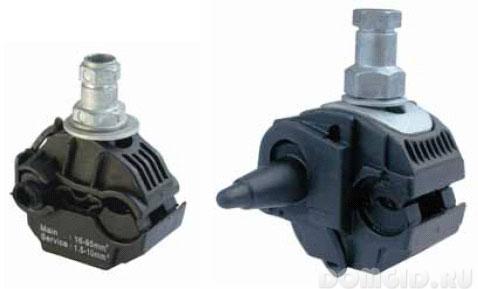
This connection option is not entirely convenient due to the large dimensions of the adapter itself, which is difficult to hide under the decoration of the room: skirting boards and boxes.
one-piece connection
One-piece connection is made using a special rivet tool.

The principle of operation of the rivet is simple retraction and subsequent cutting of the rod, which passes through a tubular rivet with a hat.

The wire connection technology is as follows:
- Remove insulation from conductors (cleaning length is equal to 4 diameters of future rings). It is optimal if the diameter of the ringlets slightly exceeds the diameter of the rivet.
- Twist the rings from the cleaned ends of the wire.
- Put on the rivet all the elements in the following sequence:
- aluminum wire;
- spring washer;
- copper wire;
- flat washer.
- Insert the steel rod into the riveter and squeeze its handles until a distinctive click is heard.
- The exposed sections of the joint must be isolated.
Reliability of one-piece connection is very high, the only drawback is there is no way to disconnect and re-fasten the wires.
Alternative methods for connecting aluminum and copper wires
If you don’t have special adapters or a rivet on hand, you can use alternative methods of connecting different conductors.

Bolted connection It is considered quite durable and safe. Among its advantages, it is possible to highlight the ease of installation and versatility (in this way you can connect almost any type and brand of aluminum wires with copper).
The technology of the bolted connection:
- Remove insulation from conductors.

- Strip metal from oxidation.
- Form rings.
- Put the following items on the screw:
- spring washer;
- plain washer;
- a ring of one wire;
- plain washer;
- a ring of another wire;
- plain washer;
- nut.
- Tighten the screw.
For connecting conductors with a cross section of less than 2 mm, an M4 screw is suitable
Technologically more complex and time-consuming method of applying solder to a copper wire. You can use lead-tin solder.

Upon contact of aluminum with lead-tin solder, the electrochemical resistance index is 0.40 mV (permissible norm is not more than 0.60 mV)
The wire connection sequence will be as follows:
- Remove insulation from wires (cleaning length approx. 6 cm).
- Using a heated soldering iron, apply solder to the copper conductor.
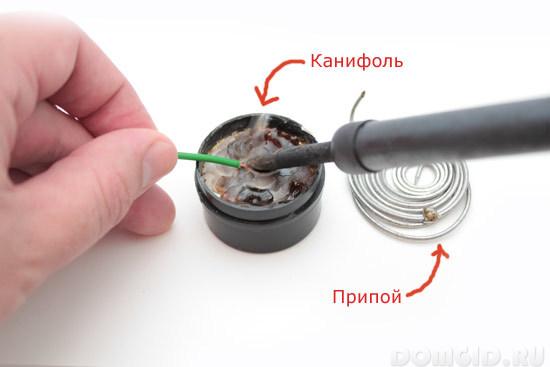
- The served copper wire can be twisted with aluminum.
This method can be used if there are no jumpers or the bolted connection does not fit in the box. However, for an electrical cable with significant loads, such a connection cannot be used.
Features of connecting wires indoors and outdoors
Outdoor wire connections are exposed to external factors and require additional protection.
The optimal solution for outdoor connections is the use of branch clamps for SIP. The material of the clamps is resistant to ultraviolet rays and low negative temperatures.

In addition, branching clamps nuts are suitable for the street.
To connect the wires in the room, you can use different conductors. One of the most convenient Wago self-clamping terminal blocks.
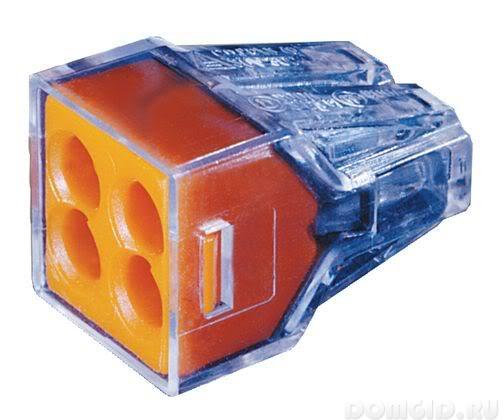
Expert advice: how to connect aluminum and copper wires
There are frequent cases of using dangerous, unacceptable methods of connecting aluminum and copper wires, which had very sad consequences. These methods include:
- Twisting copper and aluminum wires. It should be noted that a number of experts do not recognize twisting, even if a layer of soldering is applied to the copper wire.
- Twisting of wires with the subsequent protection of the junction from moisture. Some craftsmen use paraffin, oil or varnish as waterproofing. This method is unacceptable and, to put it mildly, ineffective.
Today, the problem of connecting different current conductors is solved very simply and quickly enough to purchase one of the special adapters. Therefore, it is completely inadvisable to waste time and try out unverified methods, jeopardizing the safety of not only housing, but also the people living in it.
